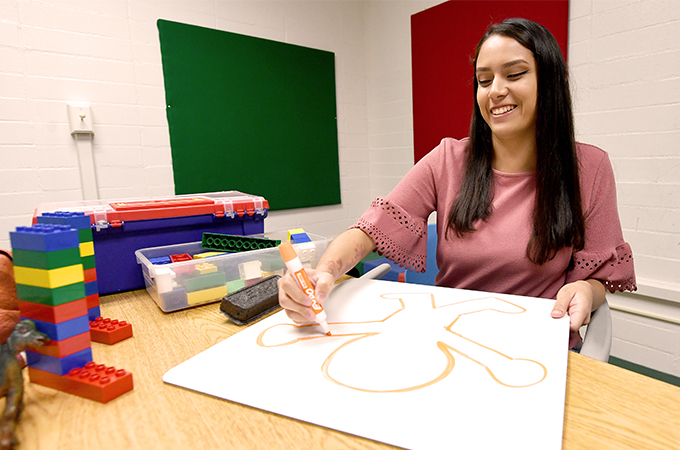As a child growing up in San Bernardino, California, Gabriela Casillas ’18, ’20 learned early on that people communicate and learn differently. Her parents constantly emphasized the idea that everyone, regardless of ability, deserves opportunity and respect, and Casillas quickly became fascinated by language and speech.
“My brother has a congenital disorder and I grew up speaking two languages,” she says. “I’ve been interested in how other family members have acquired both Spanish and English. Studying communication disorders seemed like a perfect fit.”
It seemed like a divine coincidence when, as she researched universities to attend, she found that the University of Redlands’ communication sciences and disorders program offered a certificate in bilingual speech-language pathology. Casillas, a first-generation college student, majored in Spanish as well as communication sciences and disorders as a Redlands undergraduate.
As a Redlands graduate student, Casillas has maintained her focus on multilingualism, while broadening her academic horizons. When she first entered the master’s program, Casillas was most interested in working with children, but in her first clinic also became intrigued by adult clients, who had been affected by traumatic brain injuries, strokes, and other life events.
Casillas’ experience working with adults was also educationally enriching because of her supervisor and neuropathology Professor Maria Muñoz, who provided her with constant guidance and feedback throughout the semester.
In addition to exploring new avenues in speech therapy, Casillas has found a wealth of information about monolingual and bilingual communication disorders thanks to Professor Barbara Conboy, who has provided invaluable knowledge that specifically applies to speech-language pathology with bilingual children.
“It entails more than just knowing another language. Bilingual speech-language pathologists have to be able to differentiate between a language disorder and a language difference in their clients,” Casillas says. “The program provides valuable and specific training in order to deliver appropriate services to bilingual children”.
As part of her professional preparation, Casillas has enjoyed collaborating with classmates. Navigating the program together has allowed for a highly beneficial learning environment that takes every student’s personal and academic experiences into account.
Ultimately, Casillas hopes to serve a diverse, multilingual community—similar to the one in which she grew up. Thanks to U of R, she knows she will be ready.
“All of my professors have encouraged me to talk and consult with them throughout the program,” she says. “I’ve been challenged to think differently, and they have guided me to enhance my learning experience.”
Learn more about the Truesdail Center and Communication Sciences and Disorders at the U of R.






